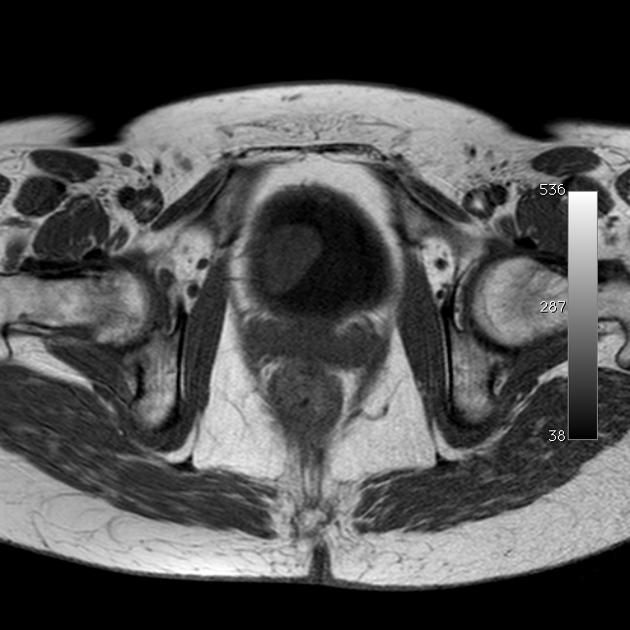Leiomyoma of the urinary bladder is a rare benign mesenchymal tumour of the bladder. The most common presenting complaints are urinary voiding symptoms such as obstruction and irritation.
These leiomyomas exhibit imaging characteristics on ultrasound, CT and MRI similar to those of uterine leiomyomas: a well-marginated homogeneous solid mass.
On this page:
Epidemiology
Leiomyomas are the most common benign bladder neoplasm but account for only 0.4% of all bladder tumours. They occur equally in men and women with a broad age range of 22-78 years 1. Approximately 75% of the patients are young and middle-aged 2.
Clinical presentation
Most are small and asymptomatic and are discovered incidentally. However, large tumours manifest with symptoms such as 1:
hesitancy, frequency, dribbling
pressure from mass effect
urinary obstruction
Pathology
It is a non-infiltrative smooth muscle tumour lacking mitotic activity, cellular atypia, and necrosis 1. Leiomyomas arise in the submucosa, but growth may be submucosal (7%), intravesical (63%), or extravesical (30%). At cystoscopy, normal bladder mucosa covers the leiomyoma.
Radiographic features
Imaging features include either a smooth indentation of the bladder wall or an intraluminal mass. The lesions are smooth, solid, homogeneous masses. Cystic components indicate degeneration. The tumour exhibits characteristics similar to those of their uterine counterpart on ultrasound, CT, and MRI, with MRI being the most accurate for tissue characterisation 1.
Ultrasound
typically shows a smooth-walled, homogeneous hypoechoic solid mass in the bladder with a thin echogenic surface 3
with ultrasound it is possible to determine the endovesical, intramural or extravesical nature of the lesion 3
CT
CT is accurate in the detection and localisation of these lesions.
presents as a hypoattenuating mass 3
demonstrates moderate contrast enhancement 2
MRI
MRI is superior in demonstrating the submucosal origin of the tumour and the preservation of the muscle layer. The imaging characteristics are similar to uterine leiomyomas:
T1: intermediate signal intensity
-
T2
low signal intensity
degenerated leiomyomas have more heterogeneous signal characteristics; cystic areas have high signal intensity
T1 C+ (Gd): contrast enhancement is variable; degenerated areas lack enhancement
Treatment and prognosis
Focal excision of the mass is the treatment of choice. A preoperative suspicion of a leiomyoma is invaluable in alerting the surgeon to the benign nature of the mass and preventing unnecessary radical surgery 1.
Differential diagnosis
A pedunculated intraluminal leiomyoma may be confused with a urothelial lesion or urothelial cell carcinoma of the bladder but a leiomyoma should be of lower signal intensity on T2-weighted images 1.










 Unable to process the form. Check for errors and try again.
Unable to process the form. Check for errors and try again.